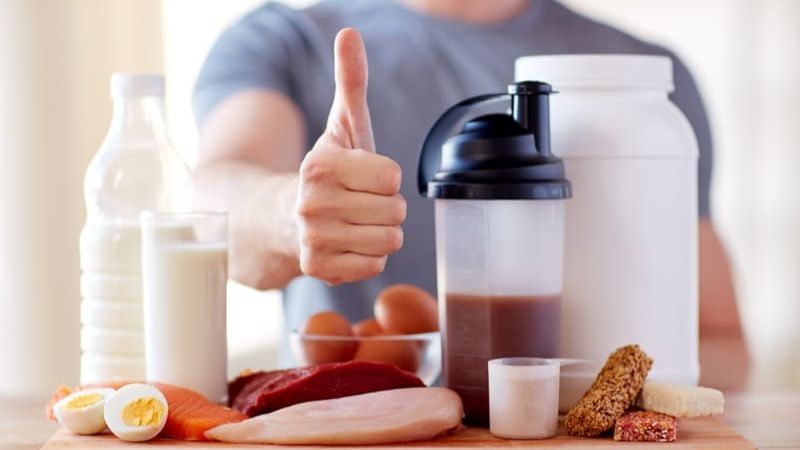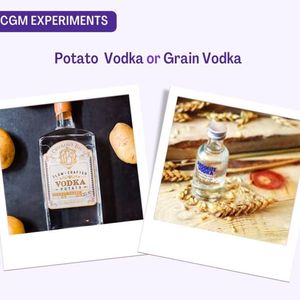

Our Review Process
Our articles undergo extensive medical review by board-certified practitioners to confirm that all factual inferences with respect to medical conditions, symptoms, treatments, and protocols are legitimate, canonical, and adhere to current guidelines and the latest discoveries. Read more.
Our Editorial Team
Shifa Fatima, MSc.
Author
Dr. Apoorva T, MHM.
MEDICAL ADVISOR
Refueling - What, When and How much?
Refueling makes an individual ready to recover from the sessions that have just been completed and prepare them for the next sessions to come. Nowadays people are ready to take up anything that has a promising result. People are eager to buy whatever promises them to be better than before.
Table of Contents
Guide to Refueling for Metabolic Health
The supply of proper and balanced food is a way to recover. One should have micro and macronutrients as per the body's requirement. One often experiences wear and tear in the body while working. To repair these, one should add proteins to their diet.
After long working hours, give time to the body to revive and rejuvenate. Take enough rest and proper sleep along with a healthy diet. Excess to workouts and competitions lead to dehydration. Re-supplying the body with fluids can be beneficial.
Why is Refueling so essential?
Excessive workouts and exercise use the stored fuel from our bodies. When our body tries to refuel it, it helps in replenishing the used fuel.
The anabolic process (building and storing) is important after it has used its reserves. It is important to replenish the glycogen. This glycogen can be accessed by the entire body. Glycogen is the form of glucose stored both in the liver and muscle. Glucose is used while muscles are at work. If the levels deplete it can cause fatigue and lead to hypoglycemia. Therefore resupplying glucose immediately after exercise and working out is recommended. It helps the body for the next workout.
When to Refuel?
One can recover faster within the first two hours of a workout or exercise. But if the carbohydrate ingestion is delayed it will decrease the rate at which muscle glycogen can be stored. Post-exercise there is a change in the insulin level and muscle glucose. It remains for about 48 hours after exercise. In reality, the athletes are trained for more than 48 hours and even compete multiple times a day. So they need to prioritize and gain an understanding of different aspects to replenish the glycogen and carbohydrate-based products. The glycogen synthesis begins and is rapid in the first few hours of the exercise. The glycogen synthesis occurs after the exercise in two phases: insulin-dependent and insulin-independent.
Synthesis of muscle glycogen in insulin-independent phase
A rapid increase is seen in the synthesis of glycogen for 30-60 minutes in the initial phase post-exercise. This process slows down if carbohydrates are not ingested. This is the initial replenishing phase after exercise.
The two substrates for glycogen synthesis are glucose and lactate. Lactate accounts for 20% after getting exhausted post-exercise. Lactate is a form of waste product and a key aspect of the metabolic process
The insulin-independent phase occurs when there is a decrease in glycogen at the end of the excess exercise.
Synthesis of glycogen in insulin-dependent phase
The rapid blood flow to the muscle, GLUT4 translocation to the plasma membrane, and glycogen synthesis are because of insulin. All these contribute to the rise in the level of glucose intake by the muscle. The use of protein and caffeine or other alternative carbohydrates can reinforce the delivery of carbohydrates.
What to Refuel?
The working of protein and carbohydrates together aids in improved protein metabolism and improved synthesis of glycogen in comparison to when carbohydrates work in isolation. The source of carbohydrates does not impact the storage of glycogen. The ingestion of certain types of amino acids can help in the secretion of insulin. There is a greater effect when amino acids combine with protein and carbohydrates to release insulin. So to accelerate the synthesis of glycogen in muscle, co-ingestion of proteins and carbohydrates is done.
When the amino acids and proteins are co-ingested with carbohydrates when insulin levels are augmented and increase the glycogen synthesis activities when the intake of carbohydrates is below the threshold for storing glycogen. If the intake of carbohydrates is sufficient enough then there is no effect of co-ingestion of protein on glycogen synthesis.
When one experiences a hike in the glucose level it indicates the body has restored and is refilled. It is the anabolic state of the body. In this phase, the secretion of insulin aids glucose to be absorbed by the cells and the synthesis of proteins in the muscles. It is due to a carbohydrates-based meal.
How much to Refuel?
Carbohydrates are essential before and after exercise. After this, it directly depends on the duration and the intensity of the workouts or exercises. It also depends on how fast someone wants to recover and the intention to recover.
Carbohydrate requirements depend on
- Low intensity and moderate training and the body mass per day.
- Moderate to heavy training and body mass per day.
- Excessive training and competitions and body mass.
Protein requirements for good metabolic health
Requirements of proteins vary from age to age and the energy needed. The dose of protein is related to maximal muscle protein synthesis. When there is an increase in the intake of calories, protein comes naturally. It also depends on the body mass of individuals. If one is planning for multiple sessions each day for a short duration a quick restoration of glycogen stores is required. If one wants to maintain muscle protein and glycogen, one needs to take carbohydrates and proteins every 2 to 3 hours
Bottomline
In the post-training session, one needs to take a proper meal even if one needs to add caffeine. A proper amount of protein and carbohydrates should be added as a part of the protocol to refuel the lost energy from the body. Generally, people do take protein-rich and carbohydrates as a part of their meal, but the challenge is to take it immediately after the training session. Maintaining good metabolic health is a necessity for a healthy life.

References
- https://pubmed.ncbi.nlm.nih.gov/29173121/
Disclaimer
This website's content is provided only for educational reasons and is not meant to be a replacement for professional medical advice. Due to individual differences, the reader should contact their physician to decide whether the material is applicable to their case.






_1lAR9W.png)
_Z12iaBn.png)
